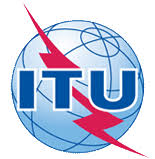SERIES X: DATA NETWORKS, OPEN SYSTEM COMMUNICATIONS AND SECURITY - Secure applications and services (2) – Distributed ledger technology security
Security guidelines for using distributed ledger technology for decentralized identity management

Security guidelines for using distributed ledger technology for decentralized identity management


ISO 8000 is the global standard for Data Quality and Enterprise Master Data. It describes the features and defines the requirements for standard exchange of Master Data among business partners. It establishes the concept of Portability as a requirement for Enterprise Master Data, and the concept that true Enterprise Master Data is unique to each organization. (Source: Wikipedia)

ISO 10303 is an ISO standard for the computer-interpretable representation and exchange of product manufacturing information.

This document identifies technical requirements for information exchange between entities within the reference architecture.
The requirements for information exchange in the following networks are within the scope of this document:
— user network that connects the user entity and the digital twin entity;
— service network that connects sub-entities within the digital twin entity;
— access network that connects the device communication entity to the digital twin entity and to the user entity;
— proximity network that connects the device communication entity to the observable manufacturing elements

This document provides a list of basic information attributes for the OMEs:
— examples of information attributes are given;
— standards that can define these information attributes are discussed in Annex A.

This document provides a reference architecture for the digital twin in manufacturing including;
— reference model from domain and entity point of view;
— functional view specifying functional entities supported by the entity-based reference model.

This document provides an overview and general principles of a digital twin framework for manufacturing including:
— terms and definitions;
— requirements of the digital twin framework for manufacturing.

This document will provide guidance for developing, implementing, monitoring and improving infrastructure resilience in order to help ensure the continuity and effective outcomes of critical services. It can be used by any level of government, institutions, donors, infrastructure regulators, investors and owners, designers and contractors, service providers and international organizations.

This document specifies the Visible Digital Seal (VDS) data structure. The document also specifies possible forms of representation, generation and verification processes applicable to Visible Digital Seals. This document contains support for future types of data encoding. All formats and processes are irrespective of the documents or objects they relate to. This document does not establish the requirements to implement and deploy VDSs, nor the detailed Response Formatting Functions (RFF).

This part of ISO 9735 specifies syntax rules specifically for the transfer of interactive messages to be interchanged between computer application systems. For the transfer of packages in an interactive environment, see ISO 9735-8.

This part of ISO 9735 specifies syntax rules specifically for the formatting of batch messages to be interchanged between computer application systems. For the transfer of packages in a batch environment, see ISO 9735-8.
